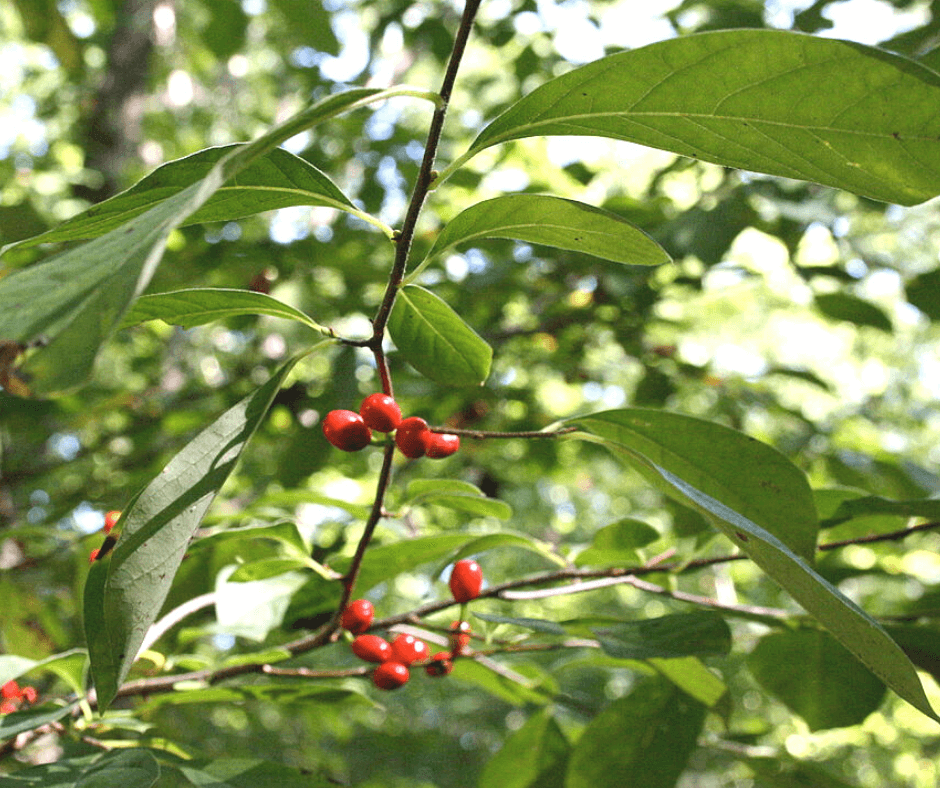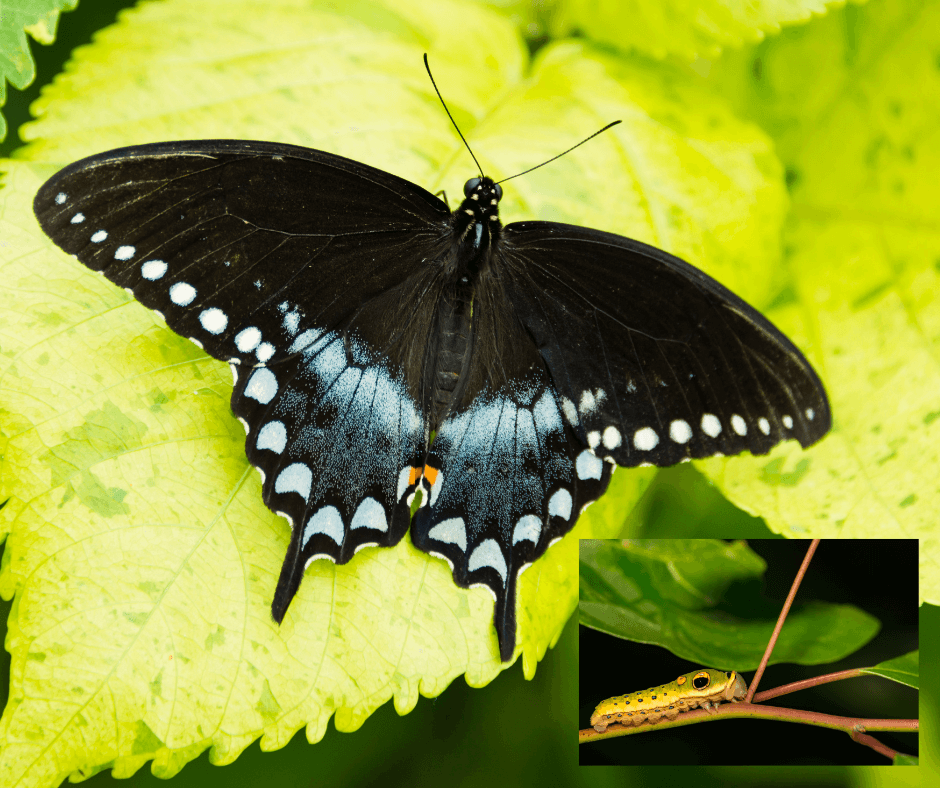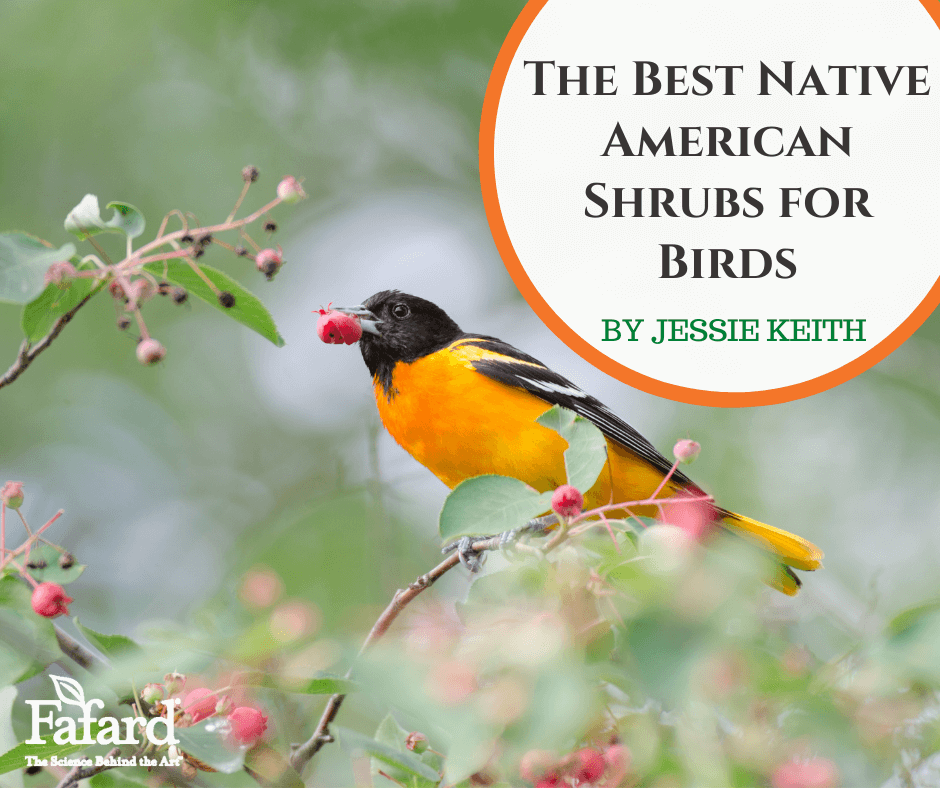
The best forage plants for wild birds are appealing natives that provide nutritious fruits, seeds, and nectar. Our top picks offer even more bird food because they attract favorite insect and caterpillar bites. Planting just a few of these shrubs in your yard will supplement bird-feeding efforts and help increase local bird diversity.
Planting to invite wildlife to feed has become more popular because more gardeners see their yards are an extension of the natural world. Natural habitat continues to be destroyed at a rampant pace, leaving fewer places for wild birds to feed. The shrubs on this list will beautify your yard or garden with their fine foliage, flowers, and fruits as well as the added beauty of the colorful, melodious birds they are sure to attract.
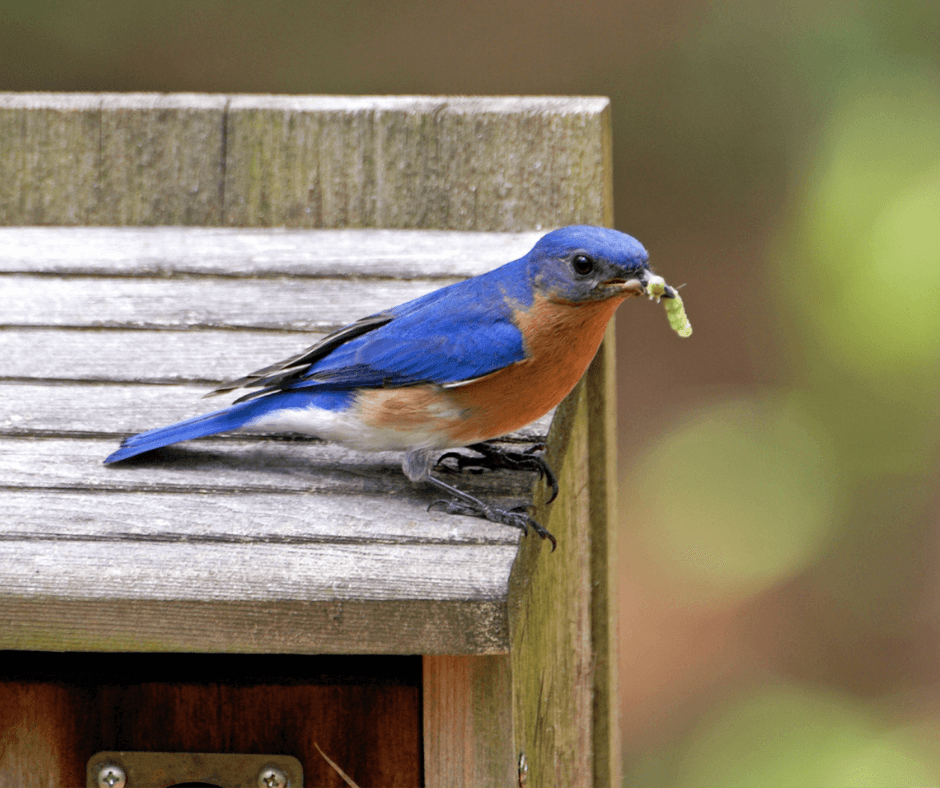
We recommend the native shrubs listed here in addition to perennials and even annuals. (Click here for a full list of great native larval host plants for the garden.)
Native Shrubs for Birds
Most of the shrubs on this list are native to Eastern North America, though some have limited distribution in the West. All are quite hardy and effortless to grow once established. (Click here for excellent shrub planting and siting instructions.)
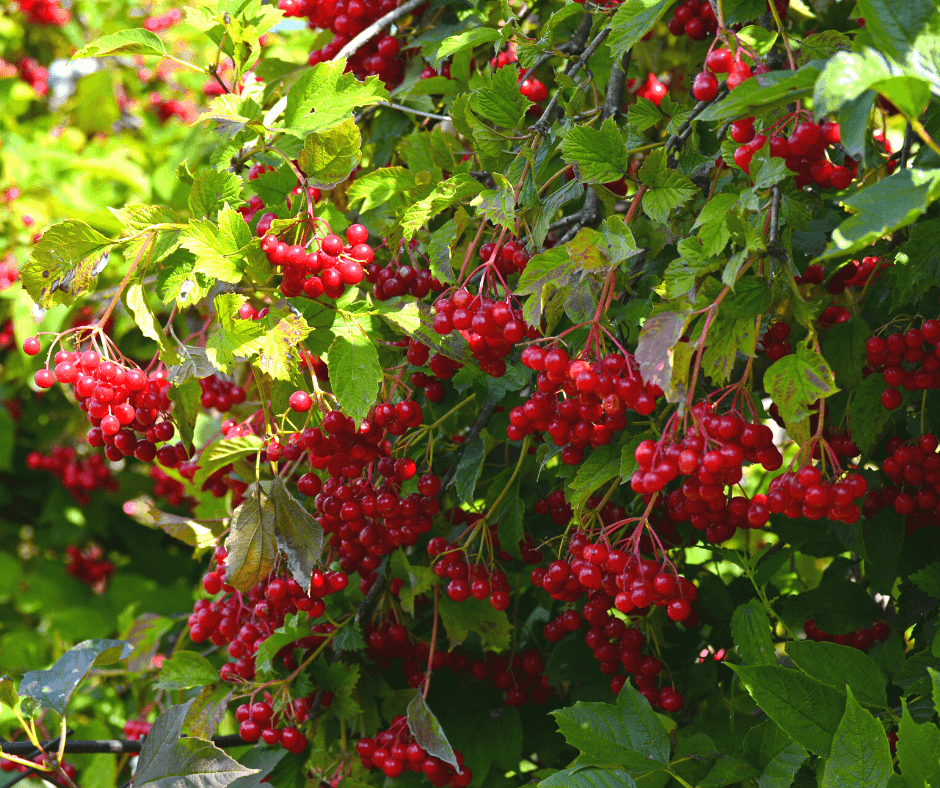
American Cranberrybush (Viburnum opulus var. americanum, Zones 2-8, 8-15 feet, full to partial sun) attracts spring pollinators, is an essential larval host plant, and provides delicious red fruits to birds in late fall and early winter. (Birds prefer to eat the berries after they have become frozen and thawed.) Few native shrubs are as beautiful. The domed clusters of white spring flowers feed bees and butterflies and red fall fruits are so cheery. The maple-like summer leaves are fed upon by spring azure (Celestrina ladon) and hummingbird clearwing moth (Hemaris thysbe) caterpillars and turn shades of orange-red in autumn.
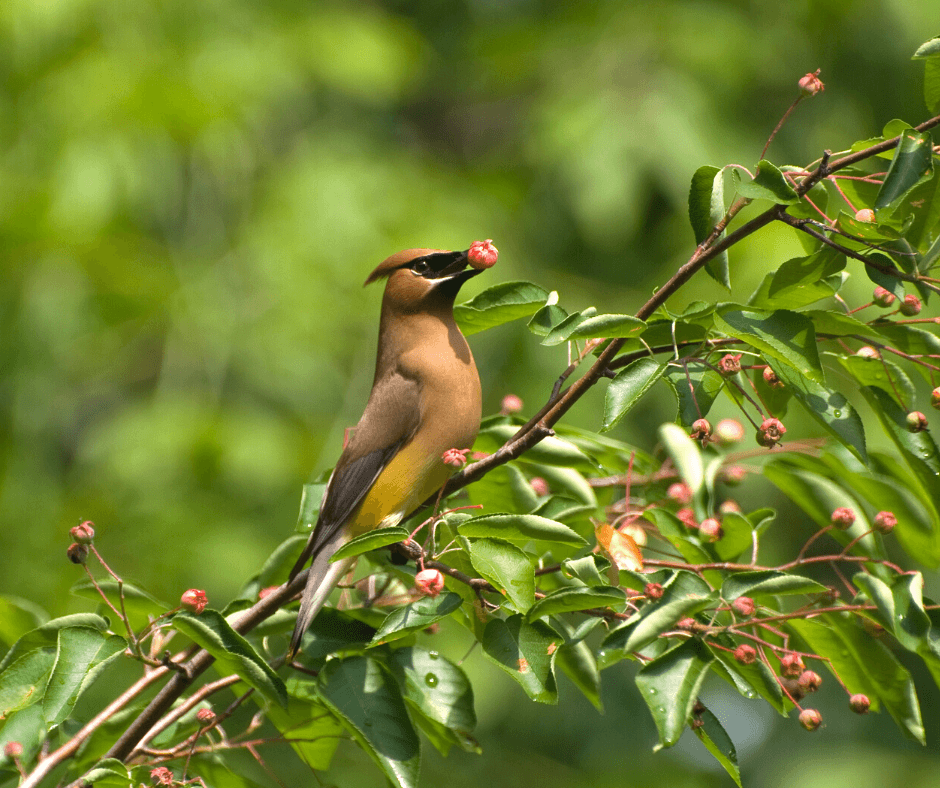
Serviceberry (Amelanchier spp., Zones 3-9, 12-20 feet, full to partial sun) species exist across much of North America, and most are well-suited to the home garden. Their white clusters of fragrant spring flowers attract pollinators, the leaves feed caterpillars, and the edible summer fruits are a favorite of birds. Red-spotted purple butterfly (Limenitis arthemis) caterpillars rely on their leaves for food. In fall, the leaves turn glorious shades of yellow, orange, and red.
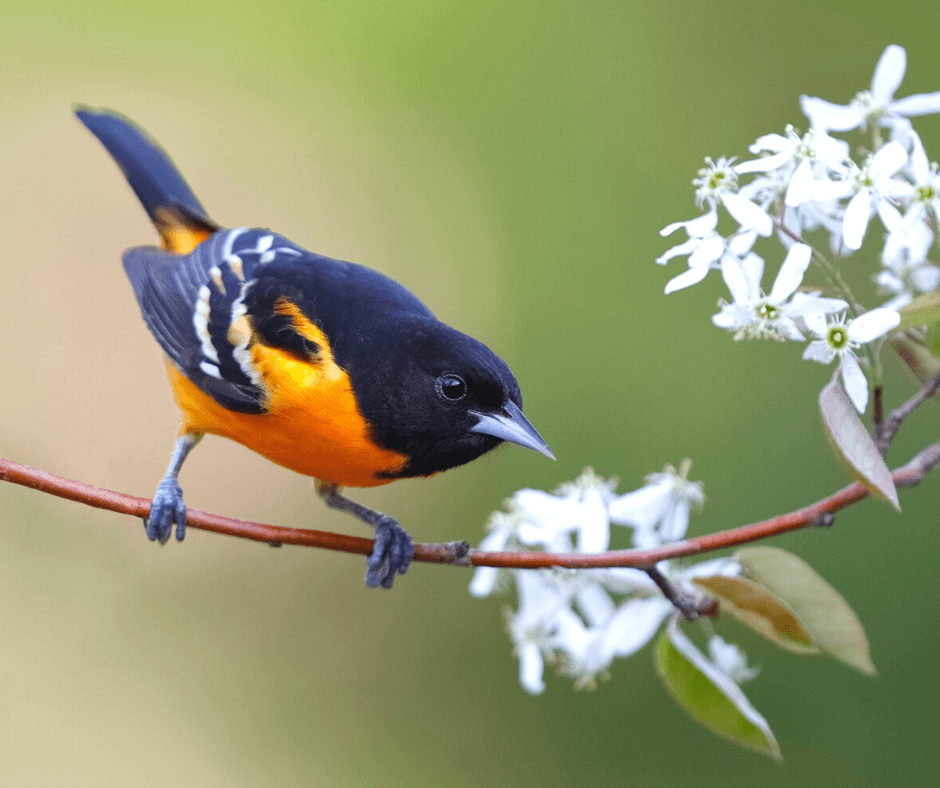
Chokecherry shrubs (Aronia arbutifolia, Zones 4-9, 6-10 feet, full to partial sun) are fantastically beautiful. The fragrant white spring flowers attract lots of pollinators, spring azure butterflies feed on the summer foliage, and the copious bright red fall fruits bring lots of birds to the garden. The season ends with a grand display of brilliant red and orange fall leaves. Try the more compact variety ‘Brilliantissima‘ (6-8 feet), which has high fruit production and redder fall leaves.
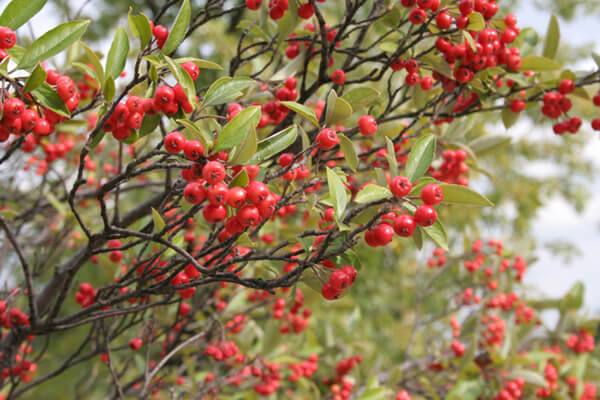
American Beautyberry (Callicarpa americana, Zones 6-10, 4-8 feet, full to partial sun) can tolerate a little shade but it flowers and sets fruit the best in full sun. Bees and butterflies visit the small lavender or white flowers that line the branches in spring, and by late summer or fall, they turn brilliant purple. Spring azure butterfly and snowberry clearwing moth (Hemaris diffinis) caterpillars feed on the summer leaves. The fruits persist until late fall if they are not snapped up by birds first. Most often the fall leaves turn yellow.

New Jersey Tea (Ceanothus americanus, Zones 4-8, 2-3 feet, full to partial sun) is a compact wildlife wild-food powerhouse! Pollinators visit the white clusters of fragrant summer flowers, including several specialized bee species, and the fatty seeds produced are snacked on by many songbirds. Several butterfly larvae, such as those of mottled duskywing (Erynnis martialis), spring azure, and summer azure butterflies (Celestrina neglecta), rely on its leaves for essential food. The foliage turns russet-yellow hues in fall.
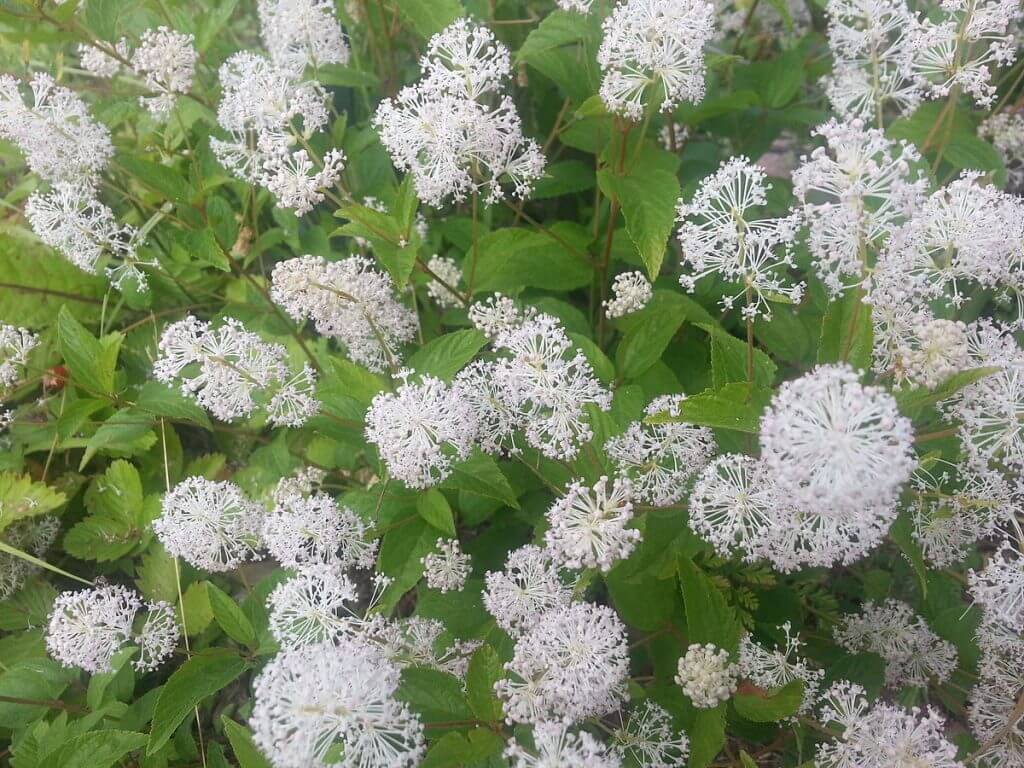
Spice Bush (Lindera benzoin, Zones 5-9, 8-15 feet, partial sun to partial shade) deserves to be planted more often in home landscapes, especially those with wooded areas. The fragrant leaves of the open shrubs are fed upon by spicebush swallowtail caterpillars (Papilio troilus), and female spice bushes produce nutritious red berries that are important to many wild birds. The fall leaves generally turn yellow.
